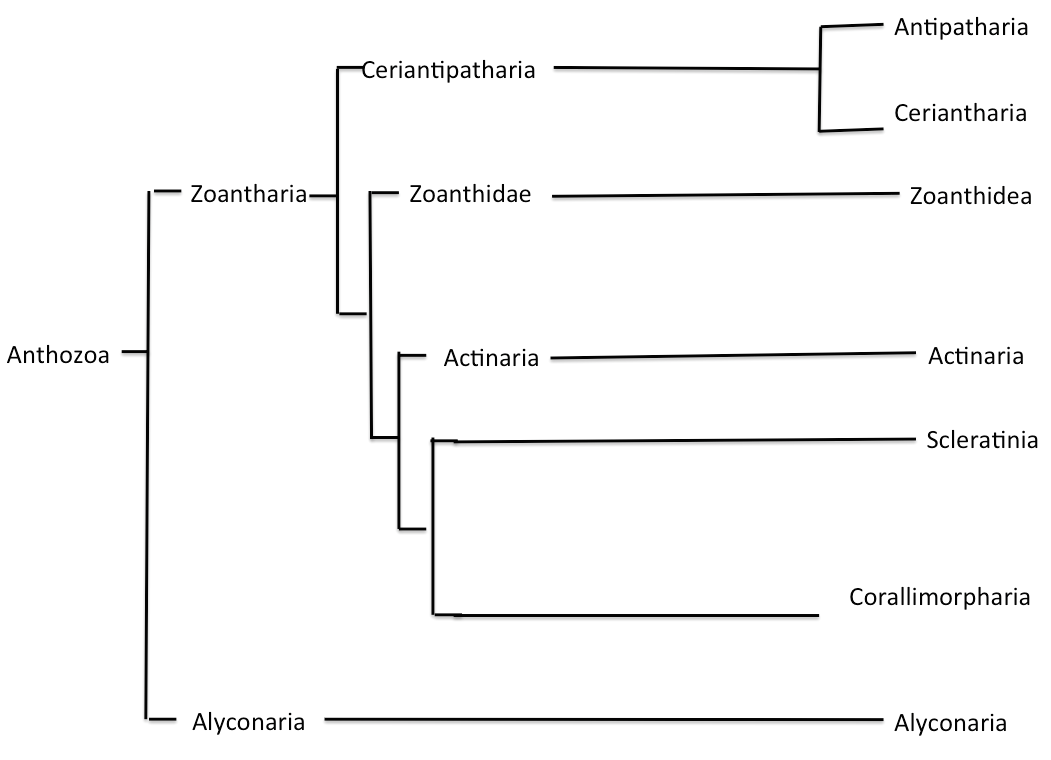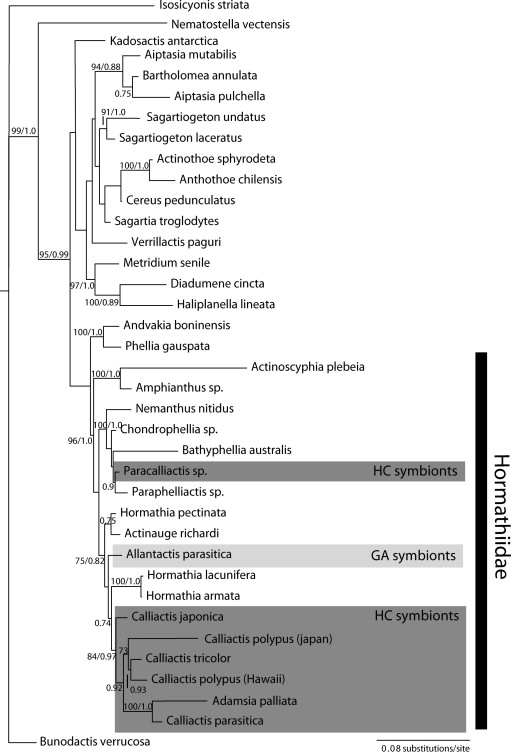Phylogenetics
Anthozoan phylogeny is not well studied and there are several different models that have been proposed. C. polypus is located within the taxa Zoantharia within Anthozoa. Zoantharia are united by hexamerous symmetry and spirocyst synapomorphy. (Ruppert, E.E., 2003) Also included within Zoantharia are the stony corals and coral anemones, however the relationships between the 3 groups are unclear. The tree below shows morphological classification within Anthozoa.

|
Tree 1: Morphological tree of anthozoa down to order. (Ruppert, E.E., 2003)
|
A more in depth study was conducted by (Gusmão and Daly, 2010) of the molecular data between several species of sea anemones, including several species also symbiotic with hermit crabs and gastropods.

|
Tree 2: Molecular phylogenetic tree. "Maximum likelihood tree resulting from a combined analysis of sequences from 12S, 16S, 18S, 28S (partial) ribosomal genes and Cytochrome Oxidase subunit III. Numbers on branches are bootstrap values from maximum likelihood analyses and posterior probabilities from Bayesian analyses, respectively. Only bootstrap values higher than 70% and posterior probabilities greater than 0.70 are shown. Grey rectangles indicate species of Hormathiidae symbiotic with hermit crabs (HC symbionts) and gastropods (GA symbionts)." (Gusmão and Daly, 2010)
|
|